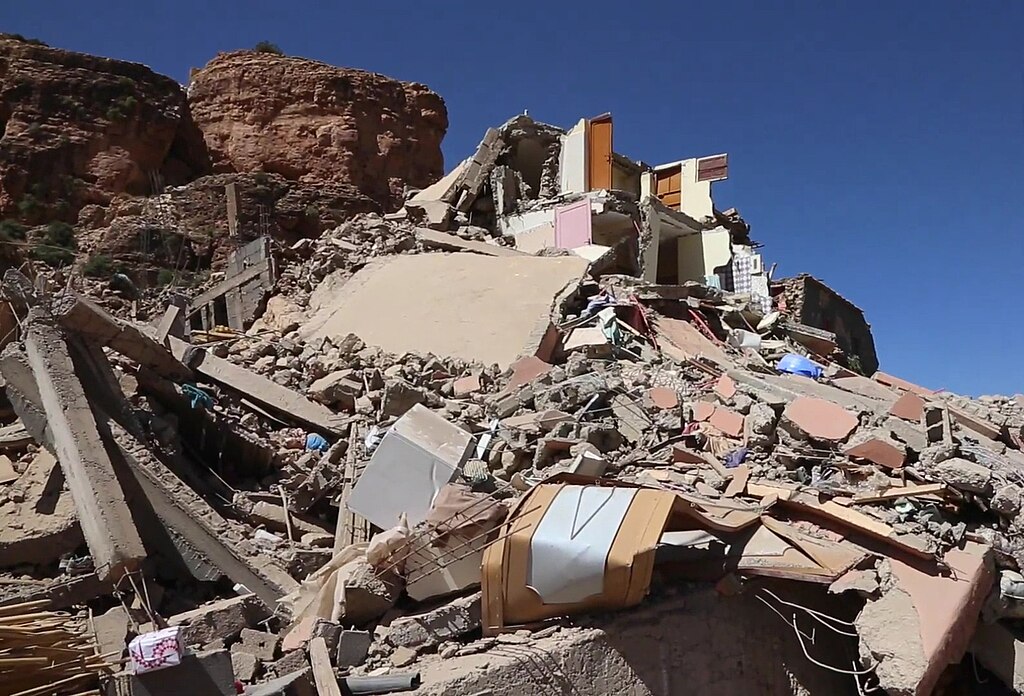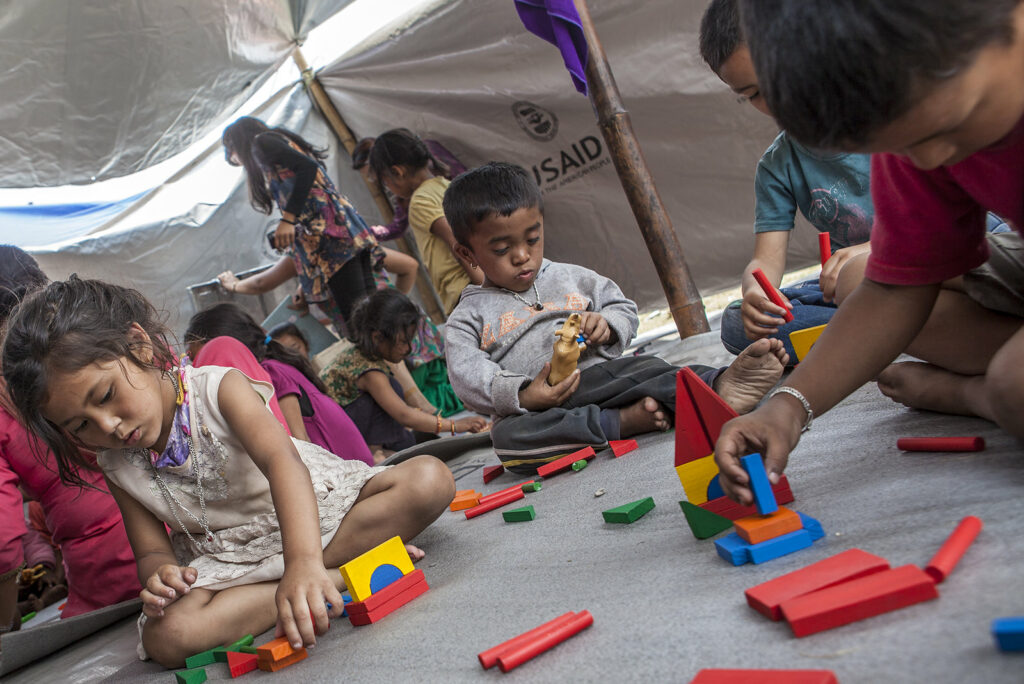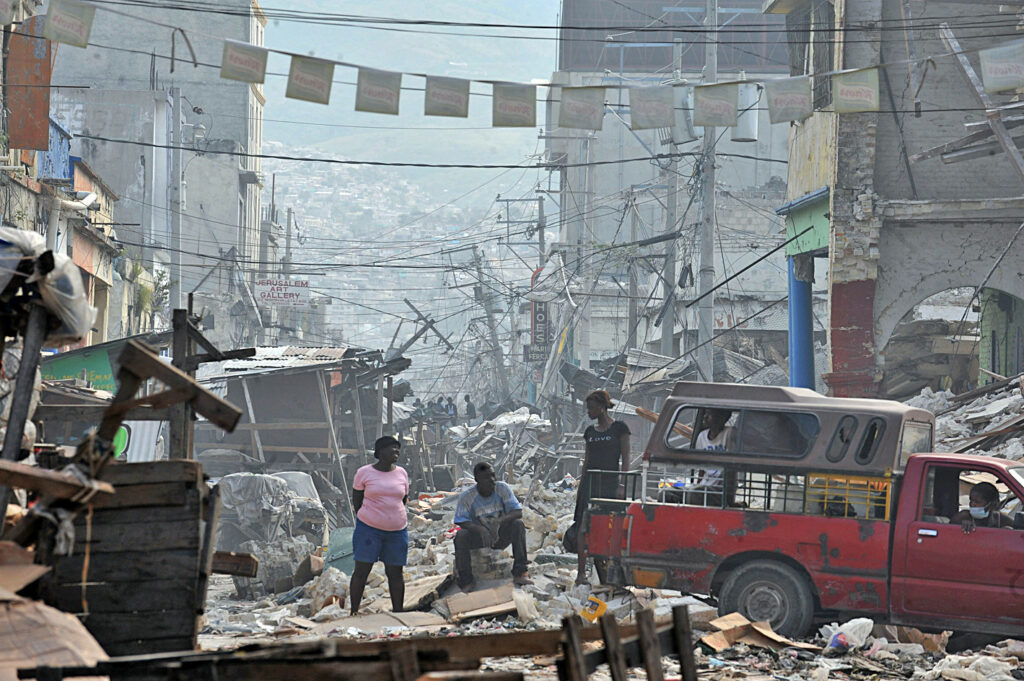
Natural disasters can be scary and confusing experiences for young people. As educators, we need to do what we can to help young people navigate them.
After numerous earthquakes in recent years, Kai Evans explores some ways we can do this.
For many young people, the devastating earthquakes in Morocco in September 2023 and in Turkey/Syria in February 2023 may have been the first time they’d seen such destruction.
It can be upsetting and scary when we see the horrific loss of life and damage that earthquakes can cause. However, exploring these natural phenomena, why they occur and what we can do in response, may help to ease some of those concerns. This is particularly important given that climate change has the potential to increase the frequency and severity of earthquakes.
Understanding earthquakes
The Earth’s plates are moving all the time, and we don’t feel the vast majority of earthquakes as they are so small. Using images and video are a very effective way to explain how the plates move, and how edges of these plates, or ‘faults’ can rub against each other, causing an earthquake. There are two other important things one should consider when exploring how earthquakes happen.
1. Language and explanations
This glossary aims to support teachers and educators to explore the language used in the context of natural disasters.
Term | Definition |
The shaking of the surface of earth, caused by sudden movement in the Earth’s crust. | |
The outermost layer of our planet; it’s a thin shell that surrounds the entire Earth. | |
Earth’s crust is made up of large, moving pieces called tectonic plates, which are all different shapes and sizes and are constantly moving. | |
A large amount of snow that quickly moves down a slope. It can be caused by an earthquake. | |
The point where the rocks start to fracture. It is the origin of the earthquake. | |
The part of the earth’s surface directly above the focus of an earthquake. | |
A giant wave or series of waves caused by a huge earthquake or volcanic eruption under the ocean. | |
The edge of the tectonic plates. Earthquakes often occur as these plates grind against each other. | |
Used to measure the magnitude of an earthquake – the amount of energy it released. Developed by Charles Richter in 1935, and is a scale between 0 and 9.9. | |
A scientist who specialises in the study of earthquakes | |
Instruments used to record the motion of the ground during an earthquake. | |
a small earthquake that echoes or follows a larger one. | |
Waves of energy that move through the Earth’s layers. They’re created when energy stored in the Earth’s crust is suddenly let go. |

2. Experiments and hands-on activities
There are countless experiments to explore how earthquakes occur. One example is building a tower with wooden blocks, and shaking the table. Unsurprisingly, the tower falls instantly. Then, repeat the experiment but build the tower with interlocking Lego bricks. The tower stays standing and more intact for much longer. This is particularly effective for showing how improvements in infrastructure can benefit people in earthquake zones. This can be made more complex for older students by asking them to design and test different designs and structures.
To show how seismic waves work, dropping a stone in water and watching the ripples can be a helpful way for younger students to visualise and understand the phenomenon.
Another experiment that may be helpful in explaining how tectonic plates move involves putting some whipped cream (the mantle), or another soft food, on a plate and then placing crackers (the tectonic plates) on top, and then slide them against each other, pull them apart and push them towards each other to show what happens as the plates move in different ways.
Ways to respond
Most students will have at least a basic grasp of how earthquakes occur, so learning about reasons for optimism in their future is of great importance. One of the most effective ways to do this is by showing progress over time in how we predict, prepare for, and respond to earthquakes. Since the turn of the 20th century, this progress has particularly accelerated, and still continues to do so.
Predict: While scientists are still unable to predict exactly when an earthquake might occur, we do know where they can occur, as scientists over the last 150-200 years have discovered that earthquakes occur along fault lines. Early warning systems are continuously being improved upon, with some researchers now thinking they can alert the public 10 seconds prior to a large tremor. While a seemingly short amount of time, it can give people the time they need to exit a dangerous building or protect themselves through the commonly recommended “drop, cover and hold on” actions.
Preparedness: By understanding where earthquakes may occur, governments and organisations have been able to be better prepared. For example, by building ‘earthquake-proof’ infrastructure that are able to better withstand earthquakes. Also, crucially, education programmes have been able to be implemented so that local populations know what to do in the event of an earthquake, as well as governments and organisations having supplies, tools and expertise ready to be used as required.
Responsiveness: By having the necessary equipment, expertise and trained personnel available and ready, we are now able to respond much quicker and more effectively than before. Governments in earthquake-prone regions often also have improved equipment and technologies to help them identify and rescue people who may be trapped under rubble. There is also greater multilateral cooperation than before in terms of earthquake response. Last year’s Moroccan earthquake saw offers of assistance from countries such as Algeria, Spain, France, the USA, Taiwan and Turkey.
It should be noted, however, that earthquake responses can still be poor, and we still have a lot to learn. Turkish President Erdoğan was roundly criticised for the slow response following the 2023 earthquake. The response of the Haitian government and particularly international organisations in Haiti came under intense scrutiny in the years following the earthquake, with broken promises, long-term economic damage, corruption and gender-based violence being widespread.

Global inequalities
As stated by Oxfam Ireland, some countries are, unfortunately, geographically placed in the path of natural disasters, causing devastation, death and destruction. At the same time, some of the root causes of conflict and war that can destroy lives and communities alongside natural disasters are poverty and inequality.
In each of these contexts (disaster, poverty or inequality), it is the poorest who are disproportionately impacted.
Japan and Haiti
Understanding the disparity between economically richer and poorer regions of the world in this context is important. Despite the technological improvements outlined above, the difference in casualties and damage is greatly influenced by where an earthquake occurs. Generally, the impact of an earthquake is far greater in poorer regions, in comparison to wealthier regions. For example, Haiti, one of the poorest countries in the world, experienced a devastating 7.0 magnitude earthquake in 2010, which killed approximately 220,000 people. Meanwhile, just one year later, Japan, one of the wealthiest countries in the world, experienced a 9.1 magnitude earthquake (and subsequent tsunami) which killed about 20,000 people. While this is, of course, a very significant number and equally devastating, the scale of fatalities is considerably less in Japan than in Haiti.
There are numerous other factors which can impact this such as the population density of an area, where the epicenter hits, or the geography of the region. However, there is great inequality in how earthquakes affect different people and communities, based on how This is not just – and we should remember this and try to ensure that earthquake prone regions have access to technologies and expertise that will help limit the worst outcomes of earthquakes, as much as possible.
New Zealand and Turkey-Syria
The disparity in responses and long-term impacts highlights another dimension of this inequality. One year on from the Turkey-Syria earthquake in February 2023, hundreds of thousands of people remain displaced, many living in container cities, as Turkey struggles to manage the rebuild of 850,000 destroyed buildings. In comparison, less than three years after the devastating Christchurch earthquake in New Zealand in 2011, it was crowned by The New York Times as the second best place to visit in 2014. There, while the earthquake tragically took 185 lives and destroyed 80% of the city centre, the rebuild often focused on a cultural renaissance. A coin-operated community dancefloor, mini golf courses and trendy bars made Christchurch a trendy place to live and visit just a few short years after the earthquake.
This is certainly not a criticism of New Zealand or Christchurch; their rebuild, resilience and perseverance in a time of great collective trauma is admirable. However, this does highlight the inequalities in long-term impacts between countries of varying economic strength. The government and local authorities in New Zealand could relatively quickly focus on building new libraries and and emerge as a cultural centre. However, the Turkish response has been predominantly focused on the provision of basic necessities for life, such as shelter, healthcare and sanitation.
Conclusion
Teaching young people about natural disasters like earthquakes can be challenging, but it is important that they understand why they happen, and the progress humanity has made in limiting their damaging effects. This helps them to retain a sense of hope for the future, and unburden their young shoulders. By giving them this understanding, while also highlighting the inequalities built into our global system, learning about earthquakes can be a very worthwhile experience.
- For more on how to teach young people about difficult topics, check out ‘A starter guide – talking to young people about war in Ukraine’ and ‘3-point guide to Palestine and Israel for educators’, both by Ciara Regan.





